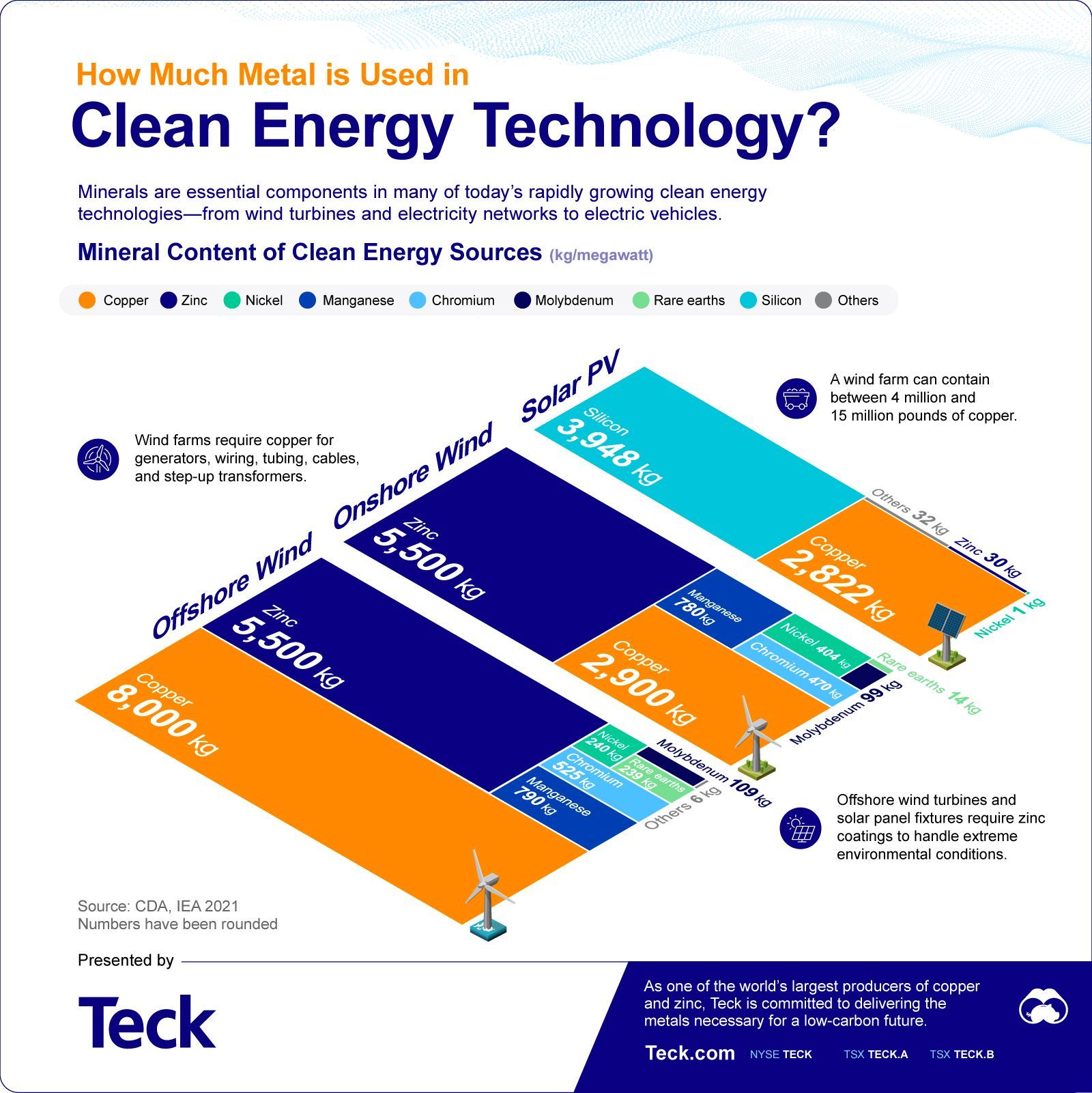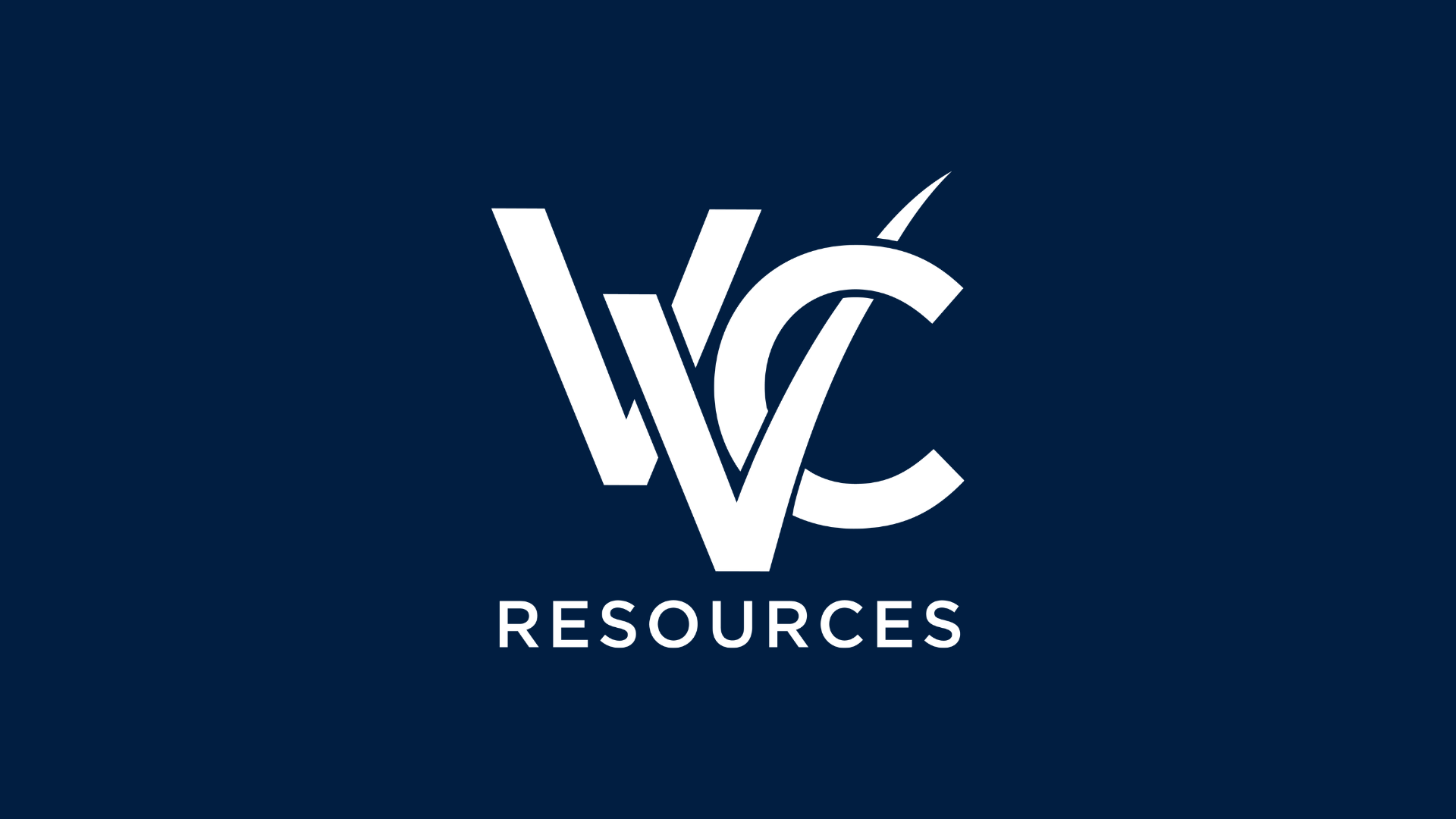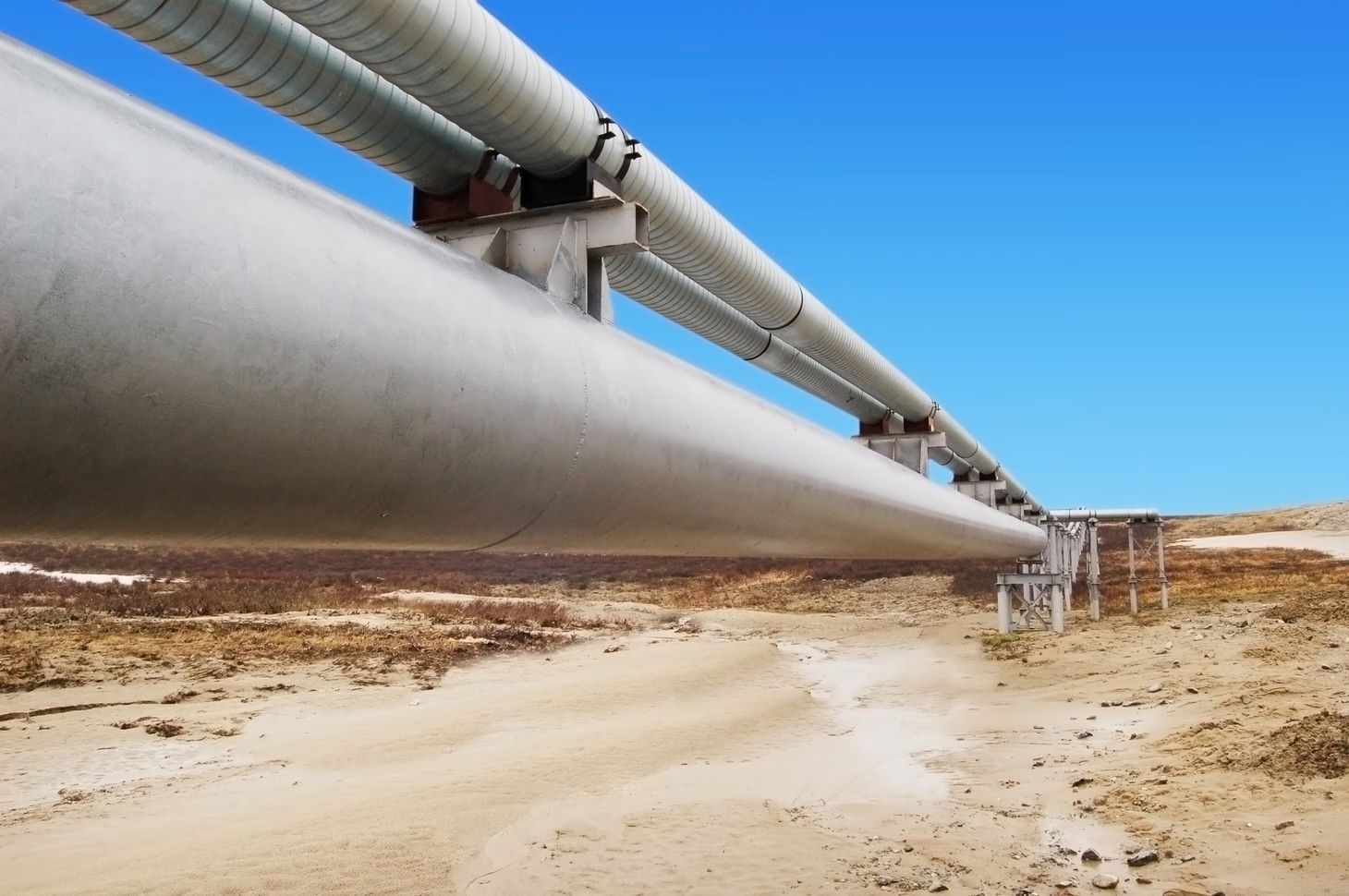Follow Us
Join our newsletter
We will get back to you as soon as possible
Please try again later
By
Tessa Di Grandi
|
Graphics/Design:
Pernia Jamshed

How Much Metal is Used in Clean Energy?
In 2022, a record 12% of all global power was harnessed from solar and wind, up from 10% in 2021, underscoring the growth of clean energy sources.
Essential minerals that form the foundation of clean energy technologies are at the heart of this transition. But what makes these minerals so indispensable?
This infographic, sponsored by Teck, looks at how much, and what types of metals are used in clean energy.
Clean Energy Uses More Metal
Clean energy systems, on average, require more minerals to build. Let’s take a look at the amount needed for wind and solar applications.
| Offshore wind | Onshore wind | Solar PV | |
|---|---|---|---|
| Copper | 8,000 kg/MW | 2,900 kg/MW | 2,822 kg/MW |
| Zinc | 5,500 kg/MW | 5,500 kg/MW | 30 kg/MW |
| Manganese | 790 kg/MW | 780 kg/MW | - |
| Chromium | 525 kg/MW | 470 kg/MW | - |
| Nickel | 240 kg/MW | 404 kg/MW | 1 kg/MW |
| Rare Earths | 239 kg/MW | 14 kg/MW | - |
| Molybdenum | 109 kg/MW | 99 kg/MW | - |
| Silicon | - | - | 3,948 kg/MW |
| Others | 6 kg/MW | - | 32 kg/MW |
Offshore wind uses the largest amount of metals here, with its copper demand alone reaching around 8,000 kilograms per megawatt of energy.
A Closer Look at Copper
Copper is the world’s third most used industrial metal and is essential for clean energy technologies due to its outstanding conductivity, versatility, and superior heat dissipation capabilities compared to other metals.
Copper’s sustainability credentials are also firmly established. This is due to its recyclability rate of 100%, meaning it can be reused multiple times without any decline in performance.
Growing clean energy infrastructure will place even more significant demands on copper. A wind farm can contain between 4 million and 15 million pounds of copper.
A Closer Look at Zinc
Zinc is renowned as one of the most versatile and vital elements in human applications. It stands as the fourth most used metal worldwide, following iron, aluminum, and copper.
Its primary application is in the galvanization process, where it acts as a protective layer for iron and steel against corrosion.
Zinc coatings play a crucial role in public transportation and infrastructure by extending the life of steel used in bridge rails, support structures, railway tracks, and more.
The construction of solar panels and wind turbines has resulted in additional demand for zinc because these assets are always exposed to the elements.
A 100MWh solar panel park—capable of powering 110,000 homes—needs 240 tonnes of zinc.
Metals for the Future
As the world moves towards renewable energy sources, copper, and zinc will remain in high demand.
Teck, being one of the world’s largest producers of copper and zinc, is dedicated to providing the metals essential for a low-carbon future.
Copyright © 2023 Visual Capitalist


Contact
info@vvcresources.com
2369 Kingston Road, PO Box 28059 Terry Town, Scarborough, ON M1N 4E7 Canada
About
Projects
Sign up to receive updates on VVC announcements, launches, and opportunities.
Contact Us
Thank you for signing up!
You will receive VVC updates straight to your inbox.
Please try again later.





